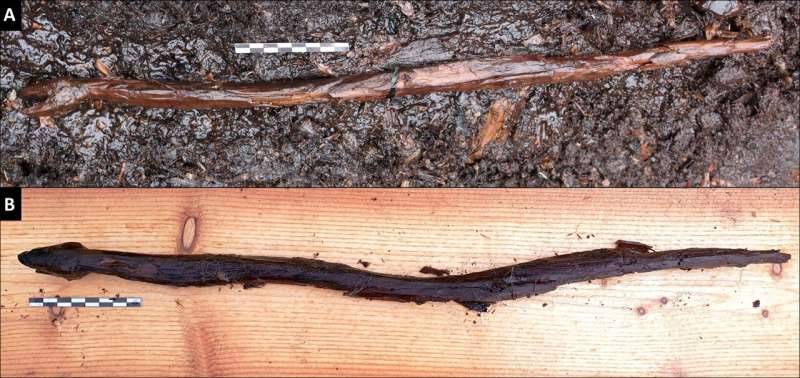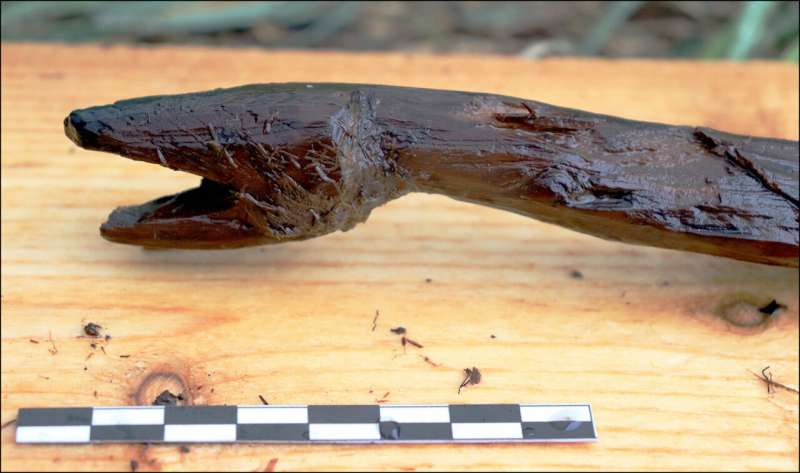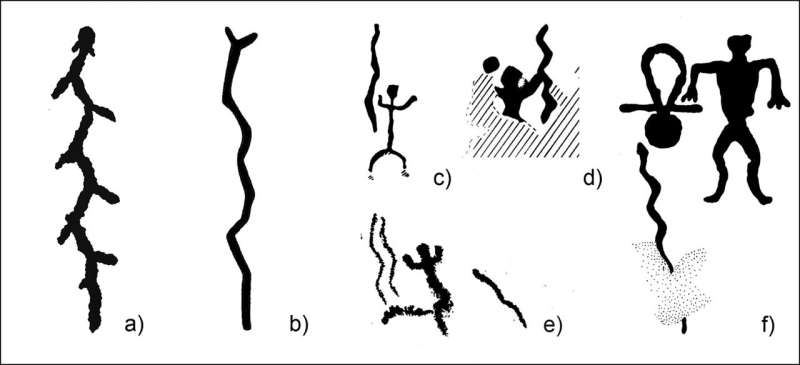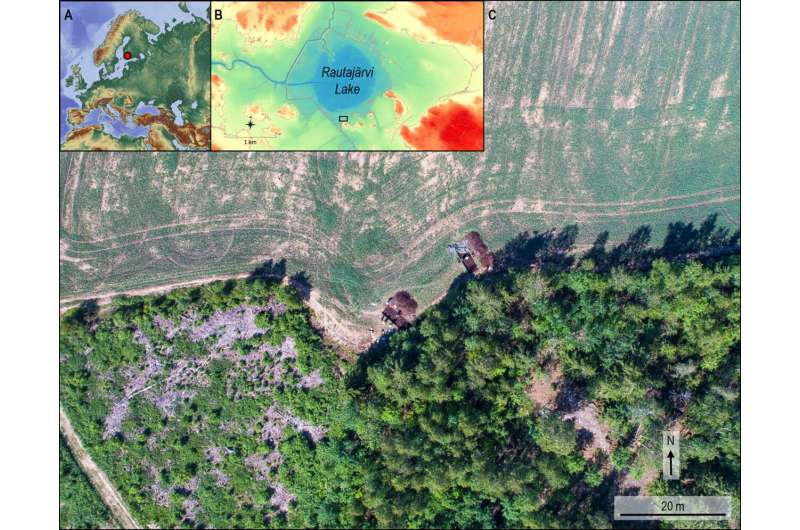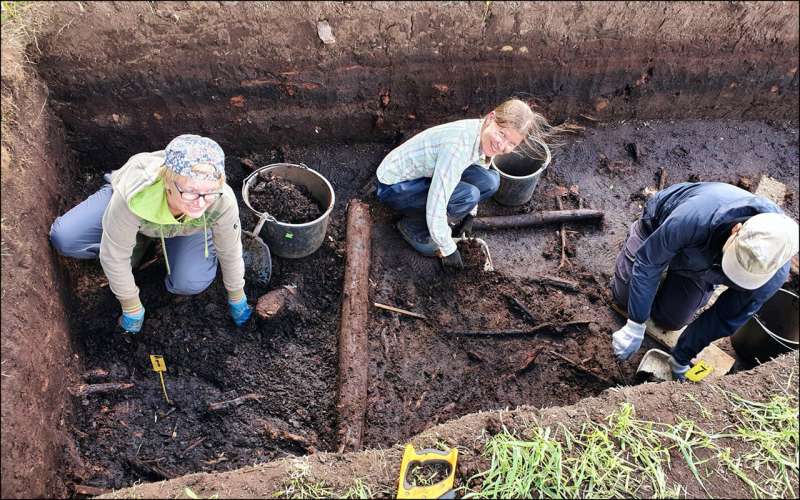Credit: Satu Koivisto et al, Between earth and water: a wooden snake figurine from the Neolithic site of Järvensuo 1, Antiquity (2021). DOI: 10.15184/aqy.2021.79
A pair of researchers from the University of Turku and the University of Helsinki, respectively, both in Finland, has found a well-preserved ancient carved snake at Järvensuo 1, a dig site in south-west Finland. In their paper published on the Cambridge University Press site Cambridge Core, Satu Koivisto and Antti Lahelma describe where the artifact was found, its condition, its age and its possible purpose.
The dig site Järvensuo 1 was discovered back in the 1950s, but little digging was done until recently. Items such as wooden utensils (including a large scoop with a handle whittled to resemble a bear's head) and pieces of fishing gear have been found. In this new find, the research pair have found a life-size carved wooden snake. They describe it as being in excellent condition. It is dark brown and very much resembles a snake as it is traveling or swimming. And its head shape indicates it was meant to resemble a viper—an adder perhaps or maybe a grass snake. The figure is approximately 53 centimeters in length and 2.5 cm thick and was made from a single piece of wood. Dating showed it to be approximately 4,400 years old.
The researchers note that the condition of the snake is remarkable, considering it is made entirely of wood and soil in the area is notoriously acidic. The site where it was discovered is next to a lake and is considered to be a wetland.
-
Credit: Satu Koivisto et al, Between earth and water: a wooden snake figurine from the Neolithic site of Järvensuo 1, Antiquity (2021). DOI: 10.15184/aqy.2021.79
-
Credit: Satu Koivisto et al, Between earth and water: a wooden snake figurine from the Neolithic site of Järvensuo 1, Antiquity (2021). DOI: 10.15184/aqy.2021.79
The purpose of the snake is not known—it was carved before written records were made, during the Neolithic period, in the last stages of the Stone Age. The researchers suggest it could have served a variety of purposes, noting that it would have worked well as a staff for a shaman as he was engaging in rituals. They also note that previously found rock art from the same time period has at times depicted human figures holding similarly carved objects. And they further note that the climate at the dig site has been changing, warmer temperatures have led to drainage which in turn has led to drying of the soil. They suggest such changes could ruin artifacts at the site that are yet to be found.
-
Credit: Satu Koivisto et al, Between earth and water: a wooden snake figurine from the Neolithic site of Järvensuo 1, Antiquity (2021). DOI: 10.15184/aqy.2021.79
-
Credit: Satu Koivisto et al, Between earth and water: a wooden snake figurine from the Neolithic site of Järvensuo 1, Antiquity (2021). DOI: 10.15184/aqy.2021.79
More information: Satu Koivisto et al, Between earth and water: a wooden snake figurine from the Neolithic site of Järvensuo 1, Antiquity (2021). DOI: 10.15184/aqy.2021.79
Journal information: Antiquity
© 2021 Science X Network
